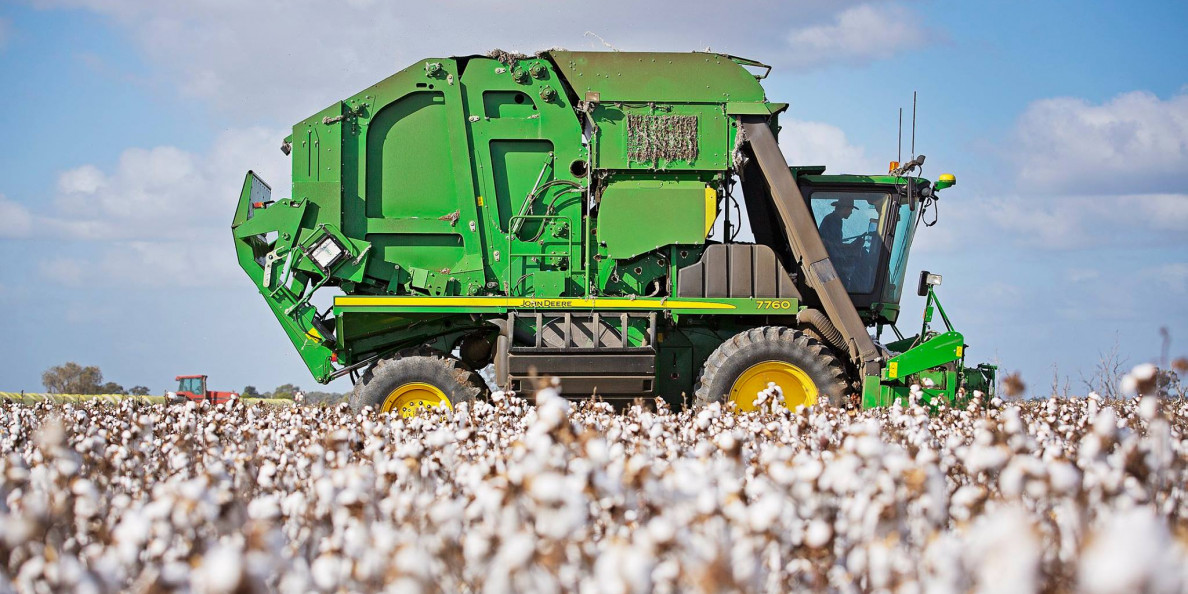USDA's December revisions of 2017/18 cotton supply and demand were both generally price supportive in their direction, although the resulting levels of ending stocks remain somewhat heavy.
John Robinson
The holidays are generally not known for tightening. Wallets get lighter. Beltlines get wider. But the official forecasts of U.S. and world cotton ending stocks both got tighter. USDA's December revisions of 2017/18 cotton supply and demand were both generally price supportive in their direction, although the resulting levels of ending stocks remain somewhat heavy.
The world balance sheet was mainly adjusted by lowering supply. Foreign beginning stocks were reduced a little over a million bales, mainly in India where historical consumption was revised upward since the 2015 crop. Foreign production was also reduced over 1.5 million bales month-over-month due to changes in India (-500,000 bales), Pakistan (-950,000 bales), West Africa (-210,000 bales) plus a few other offsetting adjustments.
The holidays are generally not known for tightening. Wallets get lighter. Beltlines get wider. But the official forecasts of U.S. and world cotton ending stocks both got tighter. USDA's December revisions of 2017/18 cotton supply and demand were both generally price supportive in their direction, although the resulting levels of ending stocks remain somewhat heavy.The world balance sheet was mainly adjusted by lowering supply. Foreign beginning stocks were reduced a little over a million bales, mainly in India where historical consumption was revised upward since the 2015 crop. Foreign production was also reduced over 1.5 million bales month-over-month due to changes in India (-500,000 bales), Pakistan (-950,000 bales), West Africa (-210,000 bales) plus a few other offsetting adjustments.
A 340,000 month-over-month increase in foreign consumption, most of which was in India, reinforced the tightening of the world balance sheet. The bottom line was a large 2.88 million-bale reduction in 2017/18 world ending stocks. Such an adjustment would be price supportive according to economic theory and history. The reduction in supply on the Indian subcontinent is in keeping with recent news reports and speculation about lower production there, so this outcome was probably expected by many traders and analysts.
The December revisions to 2017/18 U.S. cotton continued a trend of modest adjustments to U.S. production and ending stocks. On the supply side, the all-cotton national average yield was raised slightly to a record 902 pounds per acre. This resulted in a 63,000 bale net increase in U.S. production as increases in the Southwest were offset elsewhere. (And by the way, I did not get my Christmas wish of having USDA’s production forecast incorporate expected losses from Hurricane Harvey.)
Exports Up
U.S. exports were raised 300,000 bales month-over-month, presumably to jibe with the historically fast pace of total export commitments of U.S. cotton. USDA stated that the upward revision of U.S. exports made up for the downward adjustments in foreign production. After slightly adjusting the "unaccounted" fudge factor, projected U.S. ending stocks declined from 6.1 to 5.8 million bales, month over month.
This is also a modestly bullish adjustment. However, any forecast of over 5 million bales of U.S. ending stocks represents a doubling, year-over-year. Such an outcome would generally be associated with price weakness. Yet NY futures continue to climb. Part of the recent rally is hedge fund buying, which can be a variable thing from month to month. Both the hedge funds and many commercial traders may be expecting continued fundamental tightening of the U.S. balance sheet, mainly from an upwardly revised export number. That may happen, but it still remains to be seen.
For additional thoughts on these and other cotton marketing topics, please visit my weekly on-line newsletter at http://agrilife.org/cottonmarketing/.
Source: Delta Farmpress


